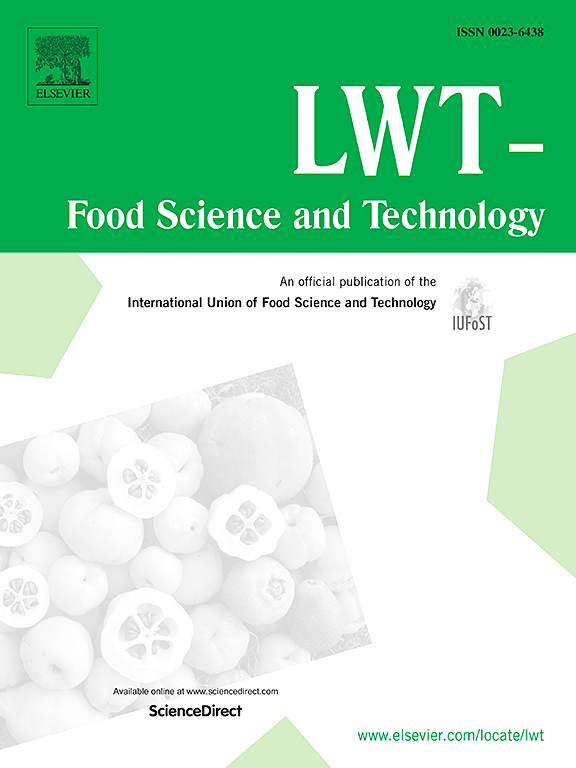Characteristic lipids and their potential functions generated during the aging process of yak ghee
IF 6
1区 农林科学
Q1 FOOD SCIENCE & TECHNOLOGY
引用次数: 0
Abstract
Yak ghee is an important food source for Tibetan herdsmen; however, the lipid composition, functional lipids changed and best consumption period during the aging process of yak ghee have not been determined. In this study, we identified a total of 386 lipids in Zhongdian yak ghee during aging, including glycerolipids (292 species), glycerophospholipids (47 species), sphingolipids (24 species), and fatty acyls (23 species). The lipids in yak ghee dynamically changed during aging, with the final product containing several polyunsaturated fatty acids (including linolenic acid, docosahexaenoic acid, and eicosapentaenoic acid), indicating its high nutritional value. Lipid fingerprints of yak ghee during aging revealed that triglyceride (16:0/16:0/20:5) and triglyceride (18:1/18:3/21:0) etc. were the characteristic lipids in aged yak ghee. The characteristic lipids in yak ghee were mainly enriched in the biosynthesis of unsaturated fatty acids, glycerolipid metabolism, and ether lipid metabolism pathways. This study provides insight into the lipid changes of yak ghee during aging, which offers a theoretical basis for the development of high-value yak ghee products.
牦牛酥油老化过程中产生的特征脂质及其潜在功能
牦牛酥油是藏族牧民的重要食物来源;然而,牦牛酥油在老化过程中的脂质组成、功能脂质的变化和最佳食用期尚未确定。本研究共鉴定了中甸牦牛酥油老化过程中的386种脂类,包括甘油脂(292种)、甘油磷脂(47种)、鞘脂(24种)和脂肪酰基(23种)。牦牛酥油中的脂质在老化过程中发生动态变化,最终产品中含有多种多不饱和脂肪酸(包括亚麻酸、二十二碳六烯酸和二十碳五烯酸),营养价值高。老化过程中牦牛酥油的脂质指纹图谱显示,甘油三酯(16:0/16:0/20:5)和甘油三酯(18:1/18:3/21:0)等是老化牦牛酥油的特征脂质。牦牛酥油的特征脂质主要富集于不饱和脂肪酸的生物合成途径、甘油脂代谢途径和醚脂代谢途径。本研究揭示了牦牛酥油在衰老过程中的脂质变化,为开发高价值牦牛酥油产品提供了理论依据。
本文章由计算机程序翻译,如有差异,请以英文原文为准。
求助全文
约1分钟内获得全文
求助全文
来源期刊

LWT - Food Science and Technology
工程技术-食品科技
CiteScore
11.80
自引率
6.70%
发文量
1724
审稿时长
65 days
期刊介绍:
LWT - Food Science and Technology is an international journal that publishes innovative papers in the fields of food chemistry, biochemistry, microbiology, technology and nutrition. The work described should be innovative either in the approach or in the methods used. The significance of the results either for the science community or for the food industry must also be specified. Contributions written in English are welcomed in the form of review articles, short reviews, research papers, and research notes. Papers featuring animal trials and cell cultures are outside the scope of the journal and will not be considered for publication.
 求助内容:
求助内容: 应助结果提醒方式:
应助结果提醒方式:


